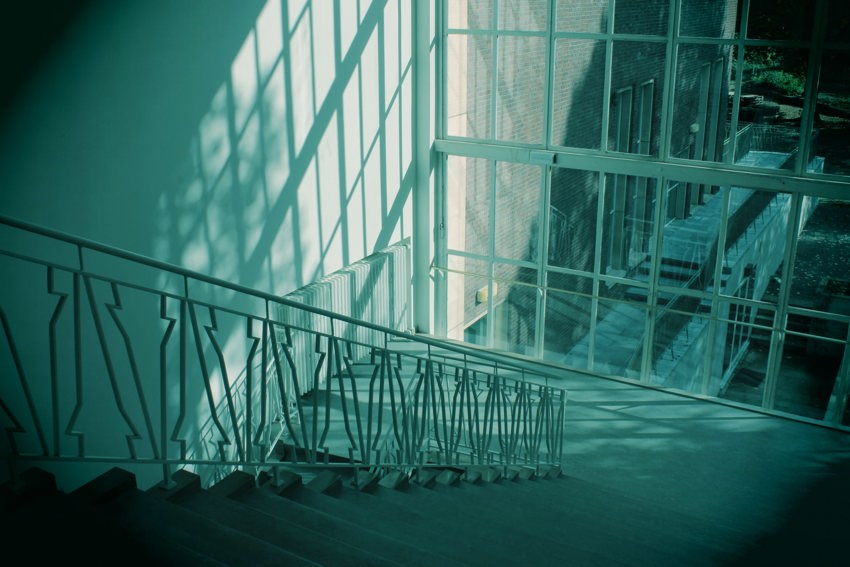Daylight in buildings
Natural daylight increases people's productivity, gives more energy and has an incredible impact on overall people's health. The daylight influences human performance (the visual system), affect health (the circadian system) and as well as personal well-being (the perceptual system).

Essence and effect of daylight
Daylight has been used for centuries as the primary source of light in interiors. As long as buildings have existed, the daylight has been an implicit part of the architecture and buildings.
Daylighting creates a visually stimulating and productive environment for occupants in all buildings, without undesirable side effects, such as glare, excess of contrast or reflection through carefully controlling shading devices and variability of daylight availability in spaces.
Daylighting system combines architecture, technologies and building systems. The integrated design approach is the best way for successful implementation of daylighting, involving decisions about the building form, building site, climate and zones, building components, lighting design and lighting control.
The use of natural light in buildings improves energy efficiency by minimising lighting, heating and cooling loads, reduce the building's electricity consumption and significantly improve the quality of light in the indoor environment.
Daylight in buildings
Natural light is a powerful architectural tool. The goal of daylighting is to collect enough daylight in the summer to turn off electric lights and collect as much as possible in the winter to help heat the building. The passive strategies like daylighting have become critical in reducing the impact of the built environment in sustainable buildings.
Harnessing daylight is done through building design, smart technologies and innovative materials. The passive daylighting strategies can collect and reflect light throughout the building. The orientation of a building can bring the best daylight throughout the building and harvest the solar gains through a variety of windows, atrium, skylights, solar tubes and other transparent openings.
To reduce heat loads, architects can also design smart external/internal shading devices to optimise. Advanced daylighting systems are designed to actively track the sun or passively control the direction of sunlight and skylight.
Daylight is a combination of direct and indirect light from the sun during the daytime. It includes natural light, direct sunlight and diffused sky radiation.
Daylighting is defined as the controlled use of natural light (direct or indirect) in and around buildings through the planning of windows, skylights and other openings, and reflective surfaces.
Illuminance is the amount of daylight received in a space (outdoors or indoors).
Daylight factor is the ratio of the light level indoors to the light level outdoors.

All you need is light.
Tips for architecture, comfort and people in buildings
A good luminous environment is simultaneously comfortable, pleasant, relevant, and appropriate for its intended use. Understanding the factors that affect human such as daylight and thermal responses are necessary to design and operate buildings properly.
Architecture and building design for daylight
The effective value of daylight will depend on the architectural design.
The design aim is to get more natural daylight to reach deeper in the buildings; and use the elements of light from outside to the inside.
Enjoy daylight while using outside elements as inspiration for interiors, such as reflection of light in water and other materials.
Building interiors are designed to permit people's need to be linked to the natural environment and to allow views.
A view of nature may have a positive influence on people's sense of well-being, better subjective health and higher environmental satisfaction.
Occupants' comfort, benefits and daylight in offices
Working in daylight rooms is an essential requirement to be able to see a task and space well. It results in environmental stimulation and less stress and discomfort.
Typically access to natural light and views of the outdoors is the number one desire for a workplace environment.
People prefer daylight to artificial light at work. General perception shows that daylight should be the primary light source for the sake of people's health and well-being.
Too high or too low contrast can also result in occupants' tiredness, headaches and discomfort.
Natural light in homes
Natural light is one of the most important attributes in homes. And inadequate natural light in homes puts the people at a higher risk of depression.
Benefits of higher light dose would leave people with a feeling of being more positive about life.
Immediately following exposure to daylight, social interactions were more cooperative and less confrontational.
Windows are daylight providers of building and are of vital importance.
Energy, costs and environment in buildings
The total energy costs of building can be reduced by 20-60% through the optimal integration of daylight strategies.
By reducing the need for electric consumption for lighting and cooling, the use of daylight reduces greenhouse gases and slows fossil fuel depletion.
The content of the view can influence rental or cost price of hotels, dwellings and office buildings. A view of nature has a positive impact on reduced health problems, job satisfaction, stressful experiences and seating preference.
Lighting is one of the largest consumers of electricity and thus is directly related to energy-related greenhouse gas emissions.
Health and natural daylight & sunlight
Daylight is a powerful human link to nature, and thus daylight has a vital influence on human health on physical, physiological and psychological levels. People tend to feel better, more cheerful and energised in daylight. Exposure to sunlight can affect health, for example switching to night-work and sleeping during daytime can disrupt body's metabolism, and thus have a domino effect on nearly everything: immune system, mood, weight, energy and more.
Lack of sunlight exposures can cause vitamin D deficiencies, and in turn, it can lead to health issues such as bone fragility, cancers and variety of depressions. Without exposure to daylight, the body may produce less melatonin, which can lead to mood changes linked to seasonal affective disorder (SAD). Less melatonin can also lead to lower production of chemicals used to repair DNA, which may trigger cancer.

Let there be a daylight — Both outside and inside buildings
Daylight is life. It allows people to interpret the surrounding world as light reveals details, colours, movements, and brightness. There is more to light than just daylight, there is also sunlight, the essence of the human ecosystem. Overall well-being is strongly connected to daylight because it affects the circadian rhythm and impacts productivity, physical performance and sleep. Find out more about how daylight plays important part in our lives and in our buildings.
Read our Update&Insight 'Let there be a daylight — Both outside and inside buildings'
Remember about daylight
- Light from the sun is intense and directional. Light from the sky is soft and diffuse. Light reflected from the ground can often account for 15% or more of the total daylight reaching a building facade.
- Our body uses light as it uses food and water, as a nutrient for metabolic processes.
- Daylight should provide enough light in the room and on the work plane to be the main, or only, source of light during daytime.
- Occupants can accept greater luminance variations in spaces lit by daylight than if artificially lit.

Daylight in history
'Right to light', an ancient Roman law which dictates that once a man has enjoyed light through a window for a minimum of 20 years that a man then have a right to continue to enjoy that light, thus preventing others from building in ways that obstruct light.
The Egyptians, ancient Greeks and Romans, each of them worshipped their own sun god.
Basic hygiene requirements for housing — a summary of the state-of-the-art in the 19th century — also includes requirements for 'adequate ventilation' and 'as much access as possible to sunlight and full daylight (bactericidal effect)'.
'Daylight is part of the architecture, and there is no substitute for daylight', as design rule for architects and engineers.
Florence Nightingale, the founder of modern nursing in hospitals, in the 19th century, listed the daylight among the top 5 key elements that are necessary for the good indoor climate in buildings.
And the sunlight was used as a healer in practice, where for example, sanatoria were built to administer light therapy for people suffering from skin diseases and other ailments.
What is light?
In the eighteenth century, Dr. Samuel Johnson noted that 'we all know what light is; but it is not easy to tell what it is'. Today, the recognized explanation says that perceptible light is visually experienced electromagnetic radiation.
It is important to include the distinction 'visually experienced', as man in his natural environment is subject to radiation from the whole of the electromagnetic spectrum.
The part of the sun's radiation spectrum that reaches Earth comprises about 50% light radiation, about 45% IR radiation and about 5% UV radiation.
These figures also indicate the relative proportions of the energy contents of these different types of radiation.
Light, IR and UV radiations
We experience different types of solar radiation in different ways. IR radiation is absorbed by the skin, where cells or receptors register it as heat. When the heat sensation becomes too great, our brain transmits signals to regulate our body temperature by opening pores in the skin and creating a sweat, resulting in a reduction of the sensation.
As far as we know, human beings do not have any receptors with which we can experience UV radiation. On the other hand, the effect of an excessive dose of UV radiation can be detected — our skin turns red and we might experience a burning sensation and nausea. Light radiation is absorbed less by the skin than both IR and UV radiation.
All our light-sensitive cells or receptors are situated in our eyes and these react in different ways, depending on whether they have a biological or visual function.
Be healthy by being outdoors in the natural daylight with nature.Steven Magee, Light Forensics